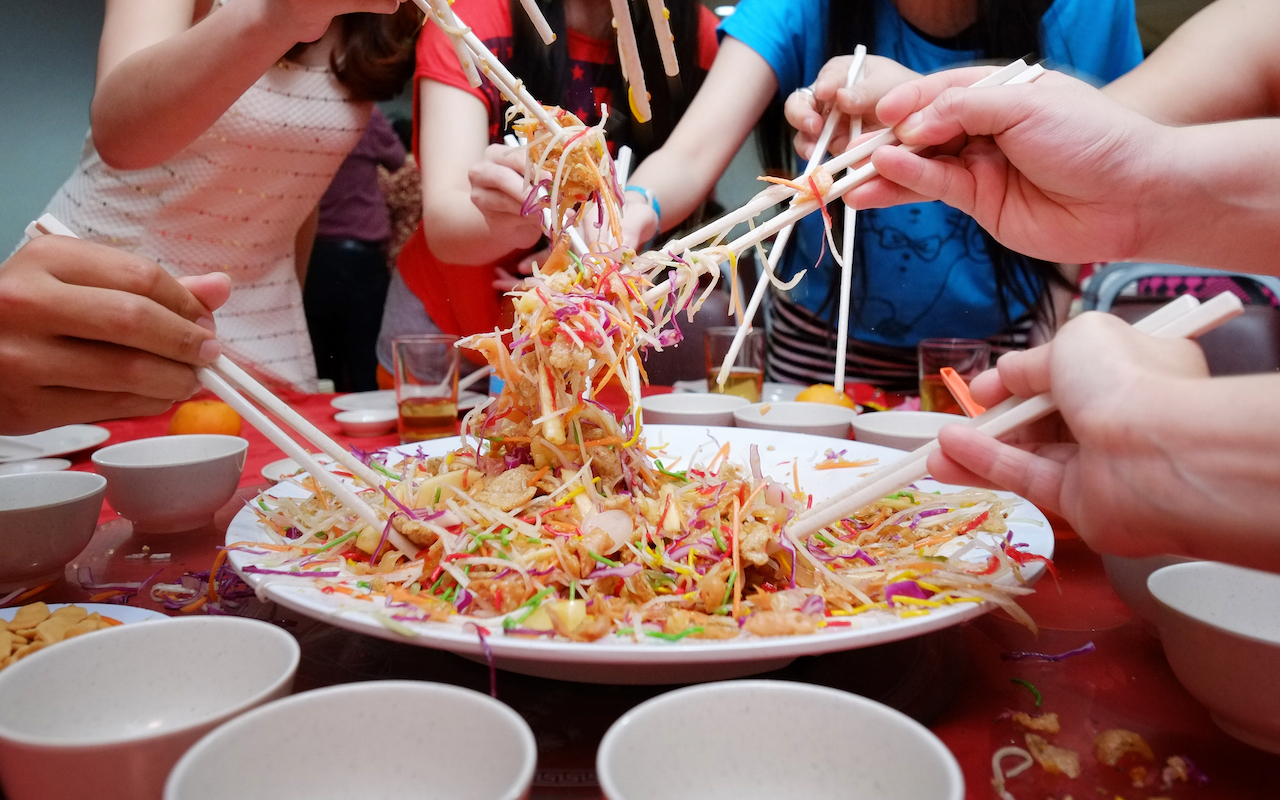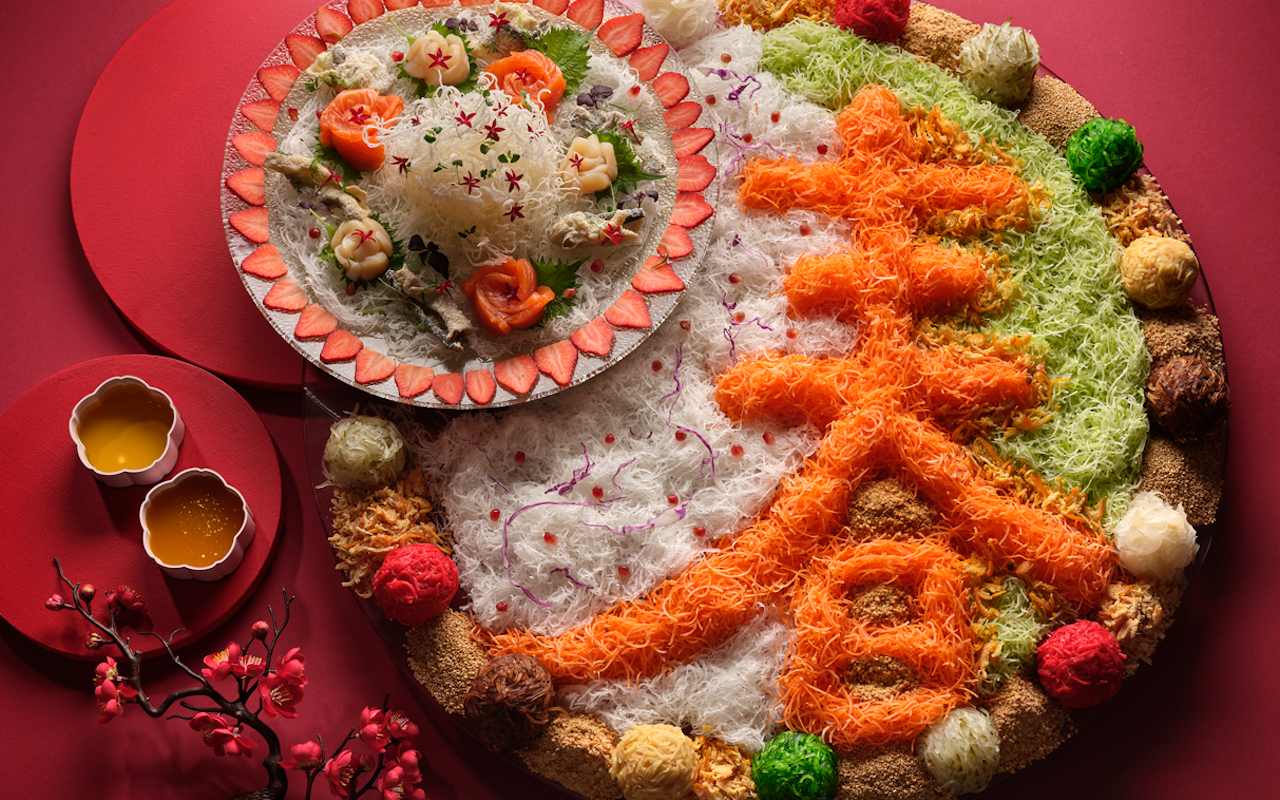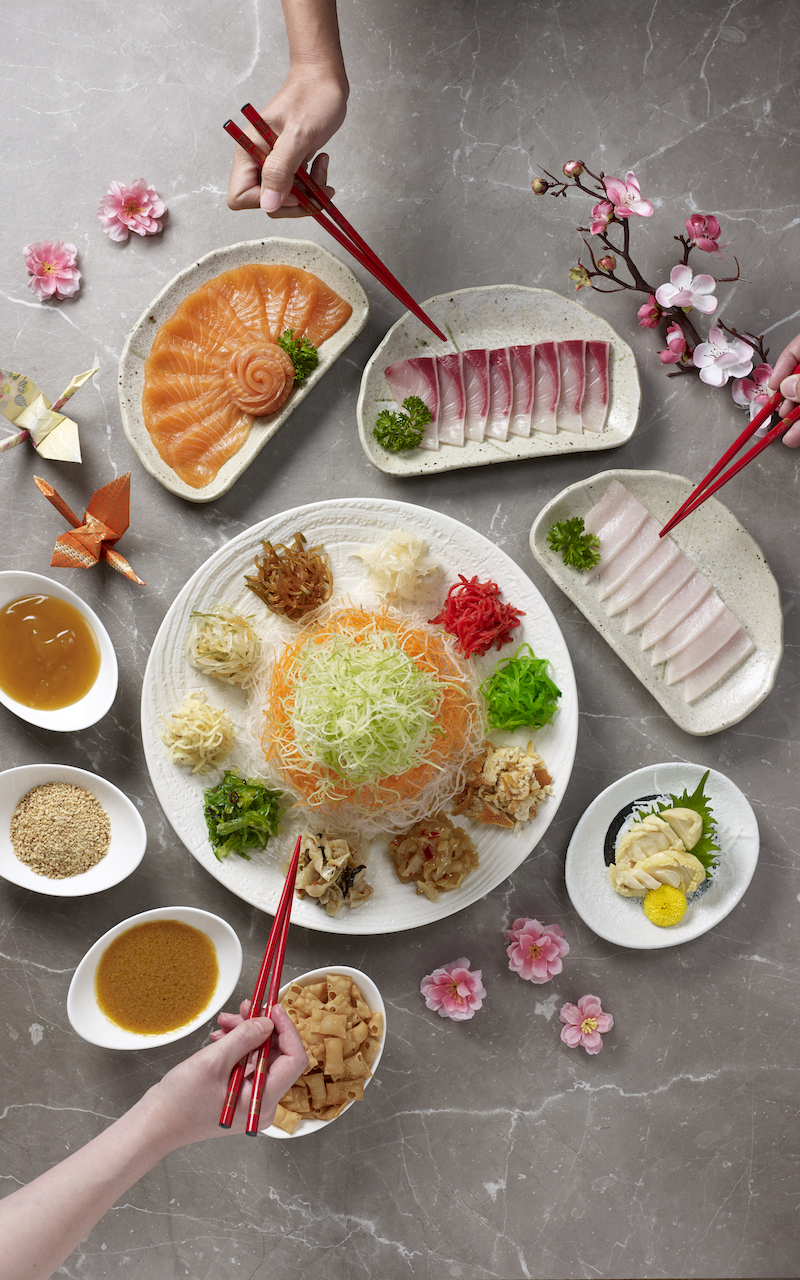Watch: Learn the meanings behind the auspicious sayings of each yu sheng ingredient
1. What it is
Yu sheng, which literally means raw fish in Mandarin, is a cold salad served during Chinese New Year in Singapore and Malaysia. In the Chinese language, yu sheng – written as 魚生 in Mandarin characters – is a homophone for 余升, a term that roughly translates to “increase in abundance”. Because of its namesake, eating yu sheng is purported to bring an abundance of prosperity and good health to one’s home, workplace and community for the upcoming year. Originally, raw grass carp was the fish of choice for this dish, but it was soon replaced with wolf herring or mackerel. These days, many restaurants use salmon, abalone and even lobster in the dish.

2. It’s a toss-up
The dish is also sometimes called lo hei in reference to the ritual of communal tossing that’s performed before eating it. A typical yu sheng dish consists of thinly sliced raw fish, shredded or pickled carrot, radish and cucumber, candied citrus peel or melon, bits of fresh pomelo, chopped peanuts, fried wonton skin, five-spice powder, plum sauce, hoisin sauce, and oil.
During a Chinese New Year feast, each of the ingredients is added one at a time to a large bowl or platter, and everyone present utters an auspicious phrase that corresponds with the name of ingredient being added. Once all the ingredients are in the bowl, everyone gathers round the table with chopsticks to simultaneously toss everything together and as high as possible while shouting lo hei – a Cantonese incantation meaning to “toss up good fortune” seven times. In this current Covid-19 climate, it’s recommended to keep your masks on when tossing the salad and use an app to verbalise the auspicious greetings on your behalf.
3. Auspicious phrases for every ingredient
The name of each ingredient used in a yu sheng dish consists of one or more auspicious words that serve as prompts for good-luck invocations. Here are some examples: When adding the raw fish or yu, say “nian nian you yu”, which means “abundance over the years”. When adding the pomelo, say “da ji da li” (“good luck and great prosperity”). When adding the oil, say “cai yuan guang jin”, which means “plentiful wealth from all directions”. When adding the golden crackers, say, “man di huang jin”, which means “abundant and overflowing wealth”. When adding the plum sauce, say, “tian tian mi mi”, which means “sweet and loving relationships”.

4. Ancient origins
Yu sheng is said to have originated from Guangdong province in ancient China, where fishermen along the coast of Guangzhou celebrated Renri – the seventh day of the Chinese New Year – by feasting on their fresh catches. These fishermen would prepare the fish in the style of a kuai – a dish made of finely cut strips of meat or fish – which was first documented in the Zhou Dynasty. Some historians believe the addition of other ingredients began in Chaozhou and Shantou during the Southern Song Dynasty.
5. A Southeast Asian invention
These days, it’s not easy to find yu sheng in Chinese cities, or even in cities with large Chinese populations such as Hong Kong or Taiwan, because the dish in its modern form is in fact a Southeast Asian invention. When the Cantonese and Teochew people of China migrated to Malaya in the late 19th century, two different versions appeared in the peninsula. The Cantonese version, known as Jiangmen yu sheng was a simple raw fish and vegetable salad with salt, sugar and vinegar, while the Teochew version, known as husay, was just dried fish wrapped in lettuce coated in sesame seeds and then dipped in sauce before eating. In 1930s Malaya, these two versions were sold from hawker carts as simple street food available throughout the year.

6. Where to try it in Singapore
The wonderful thing about yu sheng is that its creators are limited only by their imaginations. If you’re in Singapore during Chinese New Year, you can try this delicious prosperity salad at many Chinese restaurants throughout the city. If you’re dining with a large group, Man Fu Yuan at InterContinental Singapore serves one of the largest yu shengs with indulgent ingredients such Hokkaido scallop, salmon and crispy fish skin. At the National Gallery’s Yan restaurant, the yu sheng is presented in the style of Shunde, a town in Southern China. This version features a mountain of vermicelli to allude to soaring achievements in the year ahead and is complemented by shredded purple and yellow sweet potatoes, kailan, and pickled ginger.

Fancy trying international interpretations of yu sheng? Head over to Sushi Tei where the dish comes with Japanese ingredients such as salmon sashimi and chuka hotate (seasoned scallops), or Bali Thai, which marries Thai and Indonesian flavours in one dish with ingredients such as green mango, cashew nuts, jellyfish and ginger flower.
Please check the establishments’ respective websites for opening hours as well as booking and seating requirements before visiting, and remember to adhere to safe-distancing measures while out and about.
SEE ALSO: 3 days in Singapore: The Lunar New Year edition
This article was first published on January 2020.
The post 6 things you need to know about yu sheng appeared first on SilverKris.
from SilverKris
No comments:
Post a Comment